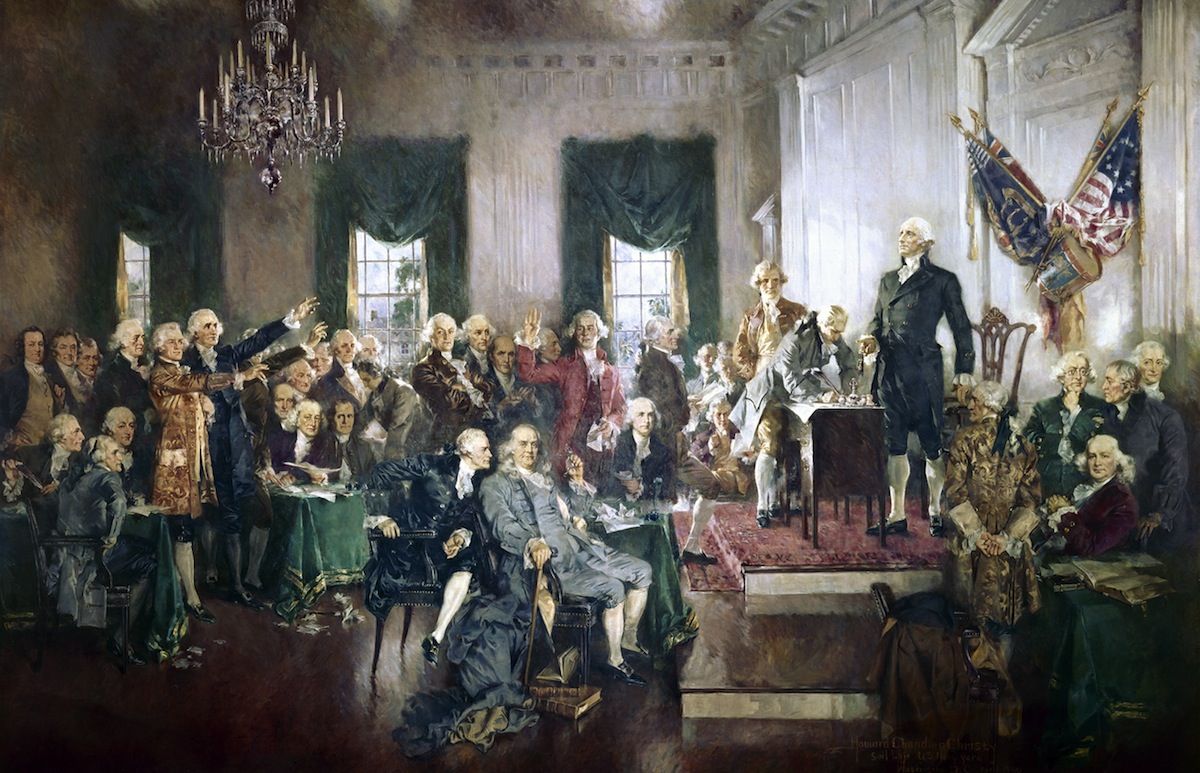
When the United States marks the anniversary of the Sept. 17, 1787, signing of the Constitution, it’s usually with a warm and fuzzy patriotism aimed at educating citizens about the document on which the nation stands.
But not every Constitution Day has been a happy one. In 1937—although the day only became an official national observance in 2004, it had long been celebrated—President Franklin Roosevelt delivered a speech commemorating the 150th anniversary of the signing that was anything but sedate.
“Having made the Constitution the most controversial U. S. political subject of the year, the President took the opportunity to define his views on it, emphasize the familiar theme that in the past four years the Supreme Court has obstructed the will of the U. S. electorate by legalistic interpretations,” TIME observed.
Roosevelt had started a new term that year, and was eager to see his New Deal plans to ease the Depression actually implemented. Until that year, the Supreme Court had blocked much of his agenda on the grounds of governmental overreach. Though his plan to add more and more favorably-disposed justices to the court had been rendered moot, his Constitution Day speech was seen as a sign that he had not given up on the idea. FDR took lawyers to task for their interpretations of the founding document and reassured the crowd that the Constitution never enumerated the number of justices.
“For us the Constitution is a common bond, without bitterness, for those who see America as Lincoln saw it, ‘the last, best hope of earth,'” his speech concluded. “So we revere it, not because it is old but because it is ever new, not in the worship of its past alone but in the faith of the living who keep it young, now and in the years to come.”
The remarks delivered to some 65, 000 people at the base of the Washington Monument drove down the markets and prompted strong rebukes from the nation’s legal scholars.
Correction, Nov. 26, 2018:
The original photo caption that appeared with this story misstated who is pictured in Howard Chandler Christy’s painting of the signing of the U.S. Constitution. Thomas Jefferson is not among those depicted.
More Must-Reads from TIME
- Inside Elon Musk’s War on Washington
- Meet the 2025 Women of the Year
- The Harsh Truth About Disability Inclusion
- Why Do More Young Adults Have Cancer?
- Colman Domingo Leads With Radical Love
- How to Get Better at Doing Things Alone
- Cecily Strong on Goober the Clown
- Column: The Rise of America’s Broligarchy
Write to Lily Rothman at lily.rothman@time.com